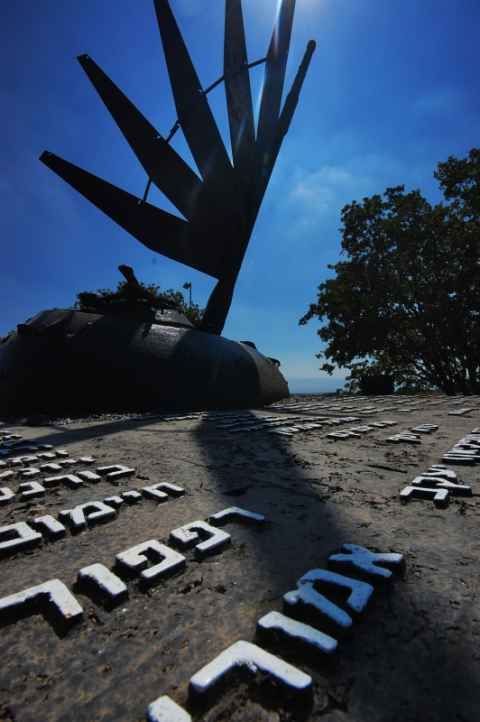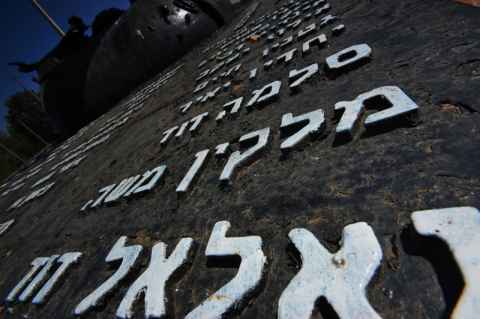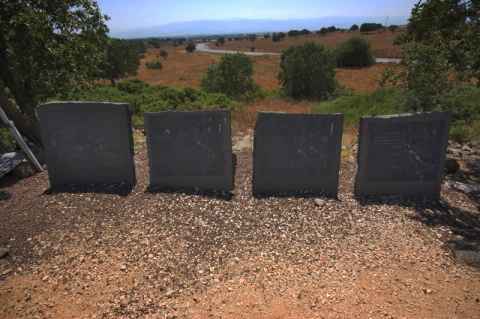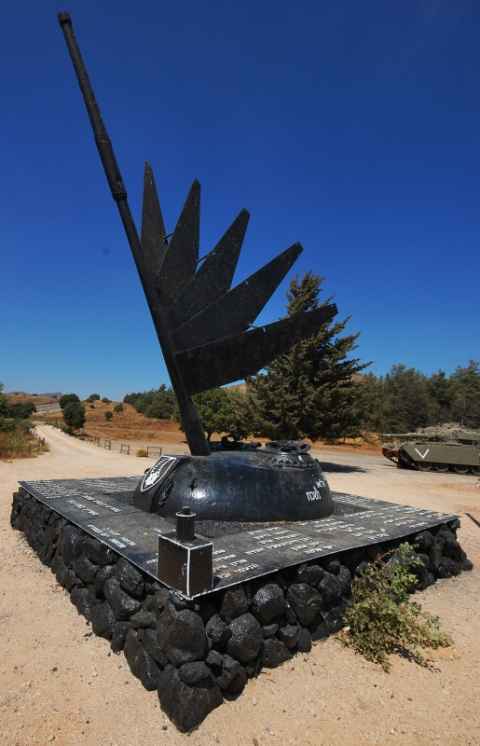Memorial to the 679th Reserve Armored Brigade and their actions during the Yom Kippur War. Israel's battle plan had always been that it would have a standing army that, backed up by the Israeli Air Force, would absorb the initial attack of an enemy while the country mobilized and brought its full military force to bear. Israel, being comparatiely tiny, doesn't have any strategic depth to fall back on - there is quite literally no place to retreat. This places considerable burden on the standing army as they can't retreat and hope to re-take ground later as well as an army of a larger country[1]. For this reason, Israel has always considered a preemptive strike on its enemies as an option. In the case of the Yom Kippur War, it could see that something was about to happen, and believed that its intelligence agency would give it at least 48 hours warning. Given that the mobilization time was estimated at 24 hours, Israel figured it was safe.
A preemptive strike was suggested to Golda Meir, but she decided against it, as it would paint Israel as the agressor internationally and reduce the amount of help they could expect from the US[2].
Consequently, when the attack did come, Israel in general and the 679th in particular were at home celebrating the holidays.
The mobilization itself isn't an instantaneous event - people must make their way from wherever they happen to be to the mobilization centers, registered, given any neccessary equipment, sent out to their units and there linked up with their squads. At the same time, war materiel (tanks, for example), must be brought to operational readiness. All of this is of course affected by Murphy's law - people will be sick, stuck in traffic jams, end up wounded or dead before they get to their units; materiel will be found to be inoperative or just plain gone. In both cases replacements must be found.
Israel just sent whatever it had as fast as it could - and in the case of the 679th, slightly faster, as we will see - but it still took 15 hours before the first mobilized units reached the Golan Heights. Luckily for the Israelis, it was nine hours faster than the Syrians had expected, and so had more of an impact than otherwise would have been possible. Something which was sorely needed, as there - for example - had been no time to properly calibrate the gunsights of the tanks before they were sent into battle.
The memorial has a pedestal with speakers that can deliver an account of the events surrounding the 679th's arrival in the Golan Heights and the battle that followed. I'll just skip to the end and I hope I'm not spoiling the enjoyment when I say that the 679th won, despite having to fight as unprepared crews in unprepared tanks.
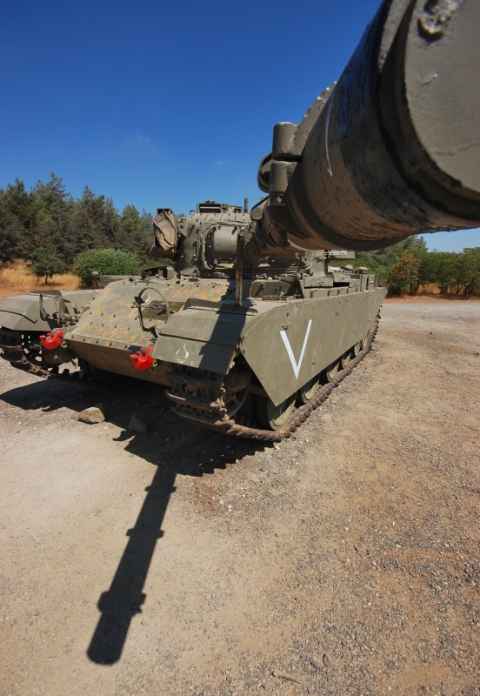
Centurion tank of the 679th. The tanks were scheduled to undergo a modernization program over a three-year period when hostilities broke out. Despite this, the 679th was considered a "good" brigade - slightly inferior to the 188th "Barak" Brigade (which was the main brigade covering this area) in terms of equipment, but still suitable for front-line duty.
Other brigades were much worse off: The 70th, for example, looked like a historical re-enactment club, with their old-style "football" helmets instead of the new plastic ones.
2010-07-01 14:59
